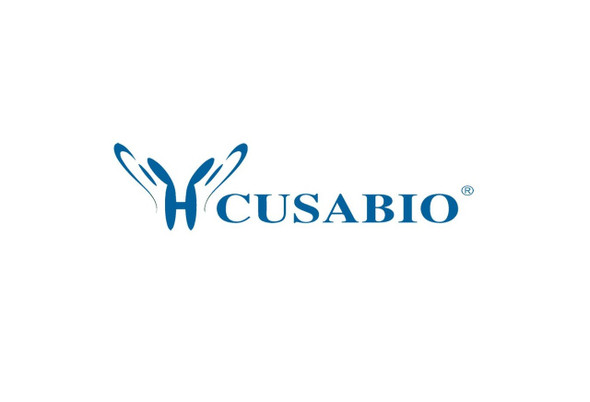Cusabio Virus & Bacteria Recombinants
Recombinant Porcine circovirus 2 Capsid protein (Cap) | CSB-EP530008EXT
- SKU:
- CSB-EP530008EXT
- Availability:
- 3 - 7 Working Days
Description
Recombinant Porcine circovirus 2 Capsid protein (Cap) | CSB-EP530008EXT | Cusabio
Alternative Name(s): Cap; ORF2Capsid protein
Gene Names: Cap
Research Areas: Signal Transduction
Organism: Porcine circovirus 2 (PCV2)
AA Sequence: MTYPRRRYRRRRHRPRSHLGQILRRRPWLVHPRHRYRWRRKNGIFNTRLSRTFGYTVKATTVRTPSWAVDMMRFNIDDFVPPGGGTNKISIPFEYYRIRKVKVEFWPCSPITQGDRGVGSTAVILDDNFVTKATALTYDPYVNYSSRHTIPQPFSYHSRYFTPKPVLDSTIDYFQPNNKRTQLWLRLQTSRNVDHVGLGTAFENSIYDQDYNIRVTMYVQFREFNLKDPPLKP
Source: E.coli
Tag Info: N-terminal 10xHis-SUMO-tagged and C-terminal Myc-tagged
Expression Region: 1-233aa
Sequence Info: Full Length
MW: 47.9 kDa
Purity: Greater than 85% as determined by SDS-PAGE.
Relevance: Self-assembles to form the virion icosahedral capsid with a T=1 symmetry. This very small capsid (17 - 22 nm in diameter) allows the virus to be very stable in the environment and resistant to some disinfectants, including detergents. Essential for the initial attachment to heparan sulfate moities and chondroitin sulfate B of the host cell surface proteoglycans. After attachment, the virus is internalized in a clathrin-, caveolae- and dynamin-independent, actin and Rho-GTPase-mediated pathway and traffics to the nucleus. The capsid protein binds and transports the viral genome and Rep across the nuclear envelope
Reference: "Nucleotide sequence of porcine circovirus associated with postweaning multisystemic wasting syndrome in pigs." Hamel A.L., Lin L.L., Nayar G.P. J. Virol. 72:5262-5267(1998)
Storage: The shelf life is related to many factors, storage state, buffer ingredients, storage temperature and the stability of the protein itself. Generally, the shelf life of liquid form is 6 months at -20?/-80?. The shelf life of lyophilized form is 12 months at -20?/-80?.
Notes: Repeated freezing and thawing is not recommended. Store working aliquots at 4? for up to one week.
Function: Self-assembles to form the virion icosahedral capsid with a T=1 symmetry. This very small capsid (17 - 22 nm in diameter) allows the virus to be very stable in the environment and resistant to some disinfectants, including detergents. Essential for the initial attachment to heparan sulfate moities and chondroitin sulfate B of the host cell surface proteoglycans. After attachment, the virus is internalized in a clathrin-, caveolae- and dynamin-independent, actin and Rho-GTPase-mediated pathway and traffics to the nucleus. The capsid protein binds and transports the viral genome and Rep across the nuclear envelope (By similarity).
Involvement in disease:
Subcellular Location: Host nucleus, Virion
Protein Families: Circoviridae capsid protein family
Tissue Specificity:
Paythway:
Form: Liquid or Lyophilized powder
Buffer: If the delivery form is liquid, the default storage buffer is Tris/PBS-based buffer, 5%-50% glycerol. If the delivery form is lyophilized powder, the buffer before lyophilization is Tris/PBS-based buffer, 6% Trehalose, pH 8.0.
Reconstitution: We recommend that this vial be briefly centrifuged prior to opening to bring the contents to the bottom. Please reconstitute protein in deionized sterile water to a concentration of 0.1-1.0 mg/mL.We recommend to add 5-50% of glycerol (final concentration) and aliquot for long-term storage at -20?/-80?. Our default final concentration of glycerol is 50%. Customers could use it as reference.
Uniprot ID: O56129
HGNC Database Link: N/A
UniGene Database Link: N/A
KEGG Database Link: N/A
STRING Database Link: N/A
OMIM Database Link: N/A









